It’s the eternal question for golfers, can I get an extra 10/20 yards off the tee? The answer is almost always yes, but to know where to start we need to assess a few different things. To break it down simply we need to make sure we are optimising 2 things: speed and ball flight. When it comes to speed, we need to look at your club speed, ball speed and smash factor (an effective efficiency rating for your ball speed). And flight boils down to launch and spin.
The first domino to fall on the way to optimal driver distance is the technique that the golfer is putting into the swing, are you delivering the club correctly to hit bombs? A really common fault that we see is players hitting down on the ball which can create a number of issues. What this often will do is launch the ball low with high spin, thumbs down to that ball flight. To get the most out of our ball flight we want to be launching the ball high with a fairly low spin rate, around 2000 to 2500 is often about perfect, and when it comes to attack angle the best way to do this is hit up on the ball. This obviously gets the ball moving on an upward trajectory but importantly is does that without chopping down on the ball and imparting excess backspin which acts like a hand brake on your ball, slowing it down and stopping it travelling forwards.
The next thing to figure out is do we strike the ball correctly? If your catching the ball in the low heel of the club, it’s unlikely that you’re getting much speed into the ball and getting the optimum ball flight. What we want is to find the middle of the club more often than not so we can efficiently impart maximum speed into the ball. If your strike creeps into the higher portion in the toe then you may well see your distance jump as well, but potentially with the risk of the hook. If we’re striking the ball as we should be, we should hopefully have a smash factor of 1.5, this figure is calculated by dividing your ball speed by your club speed, if this comes out anywhere near 1.5 you have the optimal club speed/ball speed ratio.
If you do all of this and gain a smash factor of 1.5, launch and spin the ball in the correct window, then to add distance you’ll need to start looking at increasing your clubhead speed. The thing we want to maintain when gaining club speed is the smash factor, if you just swing harder you’ll probably lose control and everything we’ve talked about goes out of the window, so the most effective way to achieve this is work on sequencing and how you generate power in a lesson format.
As a club fitter, however, my first instinct is always to find out if your equipment is working with you or against you. If you’ve put into practise all of the things that I’ve alluded to above and still struggling to get everything out of your tee shots, you probably need to look at your club needs. A vital piece of the puzzle is loft. If your loft is too high, you’ll likely launch and spin the ball too much along with potentially losing ball speed. Too low and you’ll struggle to maximise your carry. The design of the club head can also have an effect on the launch and spin but can be used to help on any off centre strikes, as the technology nowadays is so good at keeping the club stable when we don’t hit it out of the screws. And the shaft is also an important component to guarantee that we have maximum control over the club so you
can square the clubface, hit it out of the middle and have the right amount of stability for your speed. All of this is very easily assessed in a fitting scenario.
If any of this has rung true, maybe you don’t feel like you’re finding the middle of the face, or you’re swinging it really well and the ball seems to stall in the air, then feel free to come down to the shop inquire about lessons and fittings, I’m sure we’ll be able to find you a few extra yards!
Jim Mitchell
Custom Fitting Specialist



